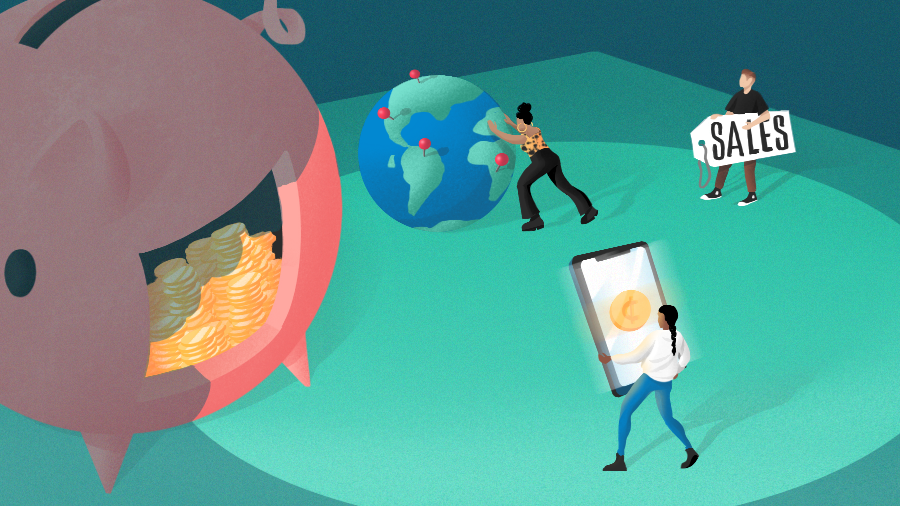By Bryan House
In the first part of my series, I wrote about the economics and business dynamics that got us to the point of market commoditization for SaaS businesses. I haven’t written this series to accelerate your downward panic spiral, so let’s focus on the positive.
Product-led growth tactics and product virality have lowered customer acquisition costs for many companies. By and large, it’s a positive thing that customers are in control. At the same time, during the COVID era software purchasing went haywire, often resulting in delusions of grandeur. Software spending in that time period outpaced the general inflation rate by 4x. On top of that, cheap VC money inflated valuations and gave many incremental startups a false sense of both upside opportunity and security.
 Bryan House, president at Elastic Path
Bryan House, president at Elastic PathAs a result of this market frenzy, buyers ended up with lots and lots of software and found themselves wondering: Is this something I need? Do we even use this? Does it deliver any results, and at what price?
In other words, just because the customer has purchased your product, doesn’t mean they’re actually “bought in.”
Fast-forward to today. The focus for most companies is on profitable revenue rather than growth. In a down economy, that revenue isn’t primarily coming from net new logos, because for the past eight quarters, buying new things was the exception. Expansion and retention revenue has become even more critical during this time period. The customers who are truly bought into your solution and invest the time to get to know you well are far less likely to churn. In my next two articles I’ll focus on some of the top ways to build that relationship from the start.
Deep alignment of product and customer success (and sales, too)
I’m a firm believer that product and customer success should be on the same team. Both product and customer success functions ultimately care about CX, or customer experience, and value realization. Aligning both teams around shared CX-focused goals and incentives helps build better products, nurture happy customers and grow expansion revenue.
The relationship with the customer ideally begins before the deal closes. Sales team members should bring product and customer success experts into the process to learn about the prospect’s unique requirements and educate them on what a true partnership could look like. The sales process is a perfect opportunity to establish your company as an extension of your customer’s team with a product that is designed (with their feedback in mind) to solve their problems.
When the deal closes, the most important part is making good on the promises you made in the sales process. Marketing agencies and systems integrators are infamous for putting their best people on the pitch, only to have them disappear once the business is won. Don’t let your team operate that way. Experts are involved in the sale to make the transition into onboarding and customer success even more seamless. In addition:
- Product should regularly speak to customers (and I don’t mean just a quarterly customer advisory board). Customers should feel they are a part of the product development process, with regular roadmap updates, requirements-gathering sessions for new products, and product usability sessions. If your team responds to the customer’s needs, they will be far less likely to churn.
- Customer success should be empowered to drive expansion revenue. Many companies treat expansion sales generated by their customer success team as just another lead source for the sales team. In reality, customer success should fully own these relationships so the focus remains on net retention, lifetime value and product adoption. Customer success teams are the ones on the front lines of the relationship, and can communicate most effectively with the product team about what must be delivered to delight the customer.
- A combined CX team should share the goal of driving value for the customer. The customer experience team is responsible for successful onboarding to “go live,” as well as every inflection point throughout the customer lifecycle — think product enablement, implementation, product adoption, launch preparation and expansion. This dynamic works best when there’s a leader empowered to help the customer navigate each of these phases to get to successful launch and beyond.
In my final article in this series, I’ll wrap up by offering two more ways to invest in customer relationships to improve your expansion and retention revenue potential.
Bryan House is the president at Elastic Path, a composable commerce company. A product and GTM executive with experience with startups from the pre-revenue stage to $170 million-plus in ARR, he is a proven company builder and leader.
Illustration: Dom Guzman

Stay up to date with recent funding rounds, acquisitions, and more with the Crunchbase Daily.
 2 months ago
22
2 months ago
22